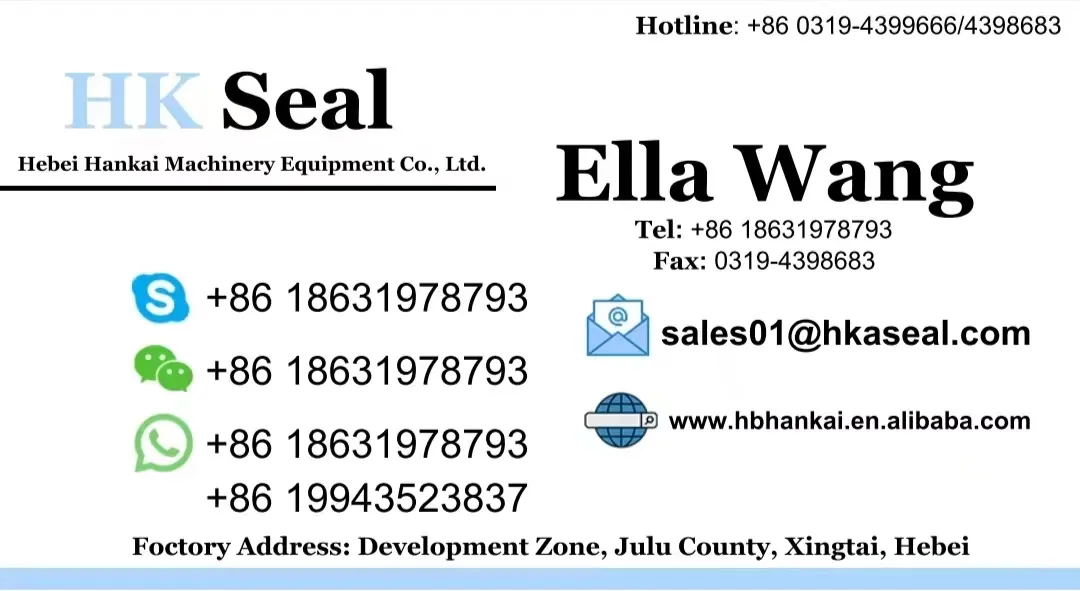10 月 . 18, 2024 18:33 Back to list
Hydraulic Motor Seal Change Guide for Optimal Performance and Reliability
Hydraulic Motor Seal Replacement A Comprehensive Guide
Hydraulic motors are critical components in many industrial applications, providing the necessary power to perform various tasks. However, over time and with regular use, seals in hydraulic motors can wear out or become damaged, resulting in leaks, reduced efficiency, and potential failure of the motor. Knowing when and how to replace these seals is crucial to maintaining operational efficiency and extending the life of hydraulic systems.
Understanding Hydraulic Seals
Hydraulic seals are designed to prevent hydraulic fluid from leaking out of the motor while also keeping contaminants from entering the system. These seals are typically made from durable materials such as rubber or polyurethane, which can withstand high pressure and harsh environmental conditions. Unfortunately, exposure to extreme temperatures, fluid degradation, and mechanical wear can lead to seal failure.
There are several indicators that may suggest it is time to replace the seals in a hydraulic motor. Common signs include visible fluid leaks, decreased motor efficiency, unusual noises during operation, and increased response times. Monitoring these symptoms can help operators catch seal issues before they lead to more significant problems.
Preparing for Seal Replacement
Before starting the seal replacement process, it is essential to gather the necessary tools and materials. This includes
- Replacement seals Ensure you have the correct size and type of seals for your specific hydraulic motor model. - Tools Common tools used in seal replacement include wrenches, screwdrivers, pliers, and seal pullers. - Cleaning supplies Oil and debris can accumulate around the motor, so having rags, cleaning solvents, and brushes on hand is vital. - Safety equipment Always wear appropriate safety gear, including gloves and goggles, to protect yourself during the replacement process.
Step-by-Step Seal Replacement Process
1. Shut Down and Disconnect Begin by shutting down the hydraulic system and disconnecting the motor from any power source to prevent accidental activation.
hydraulic motor seal replacement

2. Drain the Hydraulic Fluid Safely drain any remaining hydraulic fluid from the motor to avoid spills and contamination. Collect the fluid in appropriate containers for proper disposal or recycling.
3. Disassemble the Motor Carefully remove any covers or protective housings from the hydraulic motor. Take note of the order of disassembly and consider documenting the process with photos for easy reassembly.
4. Remove Old Seals Use a seal puller or a similar tool to carefully extract the old seals from their grooves. Take care not to damage the seal housing during this process, as any scratches or imperfections could lead to future leaks.
5. Clean the Seal Area Thoroughly clean the area where the seals will be installed. Remove any debris, old seal remnants, or corrosion to ensure a tight fit for the new seals.
6. Install New Seals Carefully install the new seals into their designated grooves. It is critical to ensure they are seated evenly and correctly to prevent future leaks. Applying a thin layer of hydraulic oil to the seals before installation can facilitate this process.
7. Reassemble the Motor Following your initial disassembly documentation or photos, carefully reassemble the motor, ensuring all components are correctly aligned and secure.
8. Refill Hydraulic Fluid Once the motor is reassembled, refill it with the appropriate type and amount of hydraulic fluid as specified by the manufacturer.
9. Test the System Before returning the hydraulic motor to full operation, conduct a thorough test to ensure that the seals are functioning correctly and that there are no leaks.
Conclusion
Replacing seals in a hydraulic motor is essential for ensuring the system operates smoothly and efficiently. By understanding the signs of seal wear, preparing adequately, and following a systematic replacement process, operators can significantly extend the lifespan of their hydraulic motors and prevent costly failures. With proper care and maintenance, hydraulic systems can operate reliably for years to come.
-
The Power of Advanced Sealing: High-Pressure Solutions for Modern Machinery
NewsOct.29,2024
-
Optimizing Machinery with High-Performance Oil Seals
NewsOct.29,2024
-
Maximizing Machinery Efficiency with Advanced Oil Seals
NewsOct.29,2024
-
Ensuring Equipment Longevity with Quality Oil Seals
NewsOct.29,2024
-
Enhance Equipment Performance with Quality Oil Seals
NewsOct.29,2024
-
Custom Oil Seals for Specialized Machinery Needs
NewsOct.29,2024
-
The Role of Wiper Seals in Dust Sealing and Oil Protection
NewsOct.20,2024
Products categories
















